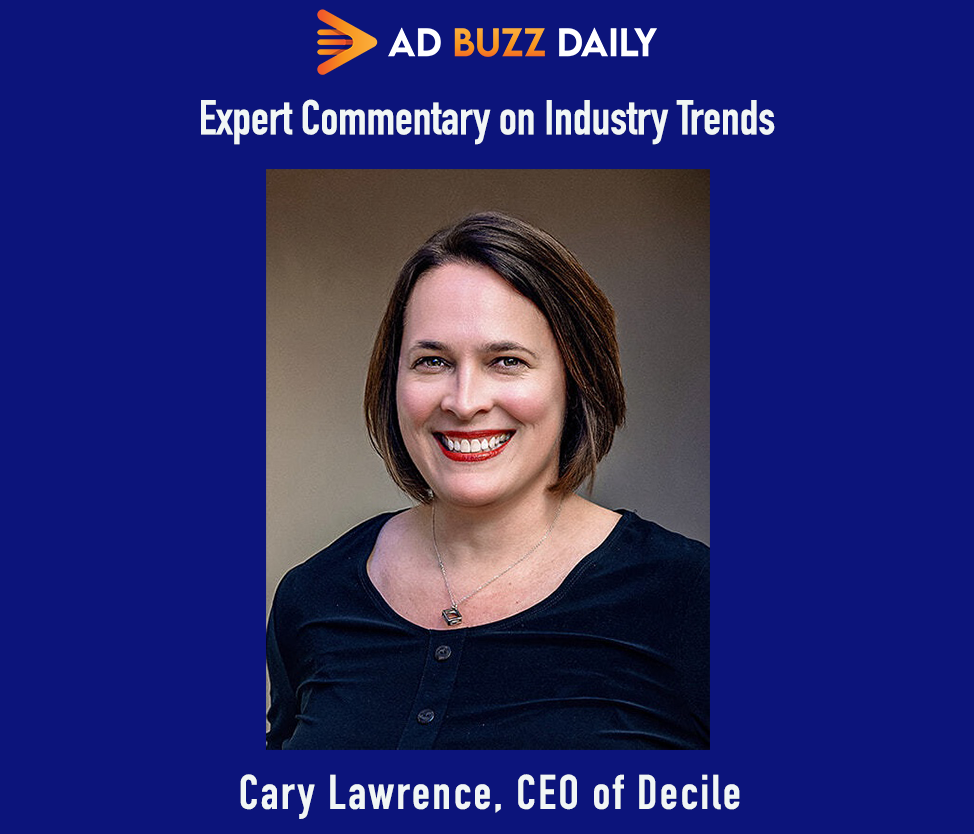Q&A: Exploring the Future of E-commerce Marketing in a Post-Cookie World

In light of Google’s recent announcement that third-party cookies will be phased out of Chrome by 2024, marketers and advertisers for medium-sized companies are concerned. As a result, tracking consumer behavior, targeting, and performance measurement techniques will be challenged in the future.
As a result of this announcement, digital advertising practices will be affected. Businesses use third-party cookies to track users across different websites, allowing them to gather valuable information about their preferences and behaviors. Marketers are faced with the challenge of finding alternatives to their impending demise to engage their target audiences effectively.
On AdBuzzDaily, we recently interviewed Cary Lawrence, CEO of Decile, a platform for customer data and analytics, about the future of E-commerce marketing following the post-cookie world. Lawrence also emphasizes that prioritizing partnerships with providers who prioritize compliance and data privacy is paramount. Companies such as Decile undergo rigorous security audits and adhere to strict protocols to maintain SOC 2 compliance. Additionally, they collaborate with trusted third-party data providers known for their reliability, accuracy, and ethical use of data.
This Q&A has been condensed for clarity
How can businesses adapt their ecommerce marketing strategies in anticipation of a cookieless future?
Businesses can utilize their first-party data to build personalized marketing strategies without cookies. Existing customer data is then appended with hundreds of attributes to build a full picture of a brand’s customer base. These can be onboarded as audiences to advertising and marketing platforms to target, without relying on cookies. It also provides more accuracy in targeting and creates less marketing waste by reaching the right customers more efficiently and effectively.
What role does first-party data play in the evolving landscape of ecommerce marketing?
Identity-based marketing is where the industry is heading. Individuals are looking for more authentic engagement with brands they shop with. A personalized customer experience is no longer a “nice to have” but a “must” in the crowded landscape. First-party data allows marketers to create a tailored strategy based around: what channels a customer spends time on, what products they’re most likely to be interested in, what creative will resonate with them, when they’ll be ready to purchase again, whether they qualify for a rewards program, whether they may be interested in subscriptions, and the list goes on.
What innovative approaches can companies employ to enhance personalization in their marketing efforts?
AI can free up so much time to analyze and take action on data, rather than wasting hours gathering and sorting data. Machines can do millions of calculations within seconds that no human would be able to accomplish. This can be used to:
- Identify unique brand personas. This used to take months to accomplish, and significant financial investment in hiring an agency to do the research and define the top customer groups. Using AI clustering algorithms, personas can be identified within minutes. These personas are based on a brand’s own customer data and are unique to each individual brand.
- Automatically map newly acquired customers to the appropriate persona. Previously, data wasn’t as democratized across the entire organization. BI tools could be built on data from a CDP, but it was infrequently updated and not easily accessible to marketers. They would have to wait months to see how a campaign or strategy may have affected their customer base. By automatically mapping new customers, and layering analytics on top of it, the insights become accessible to all and marketers are able to take action on it more effectively.
- Predict future outcomes. Predictive analytics models have been built to anticipate the future lifetime value of a customer. They may have only spent $20 with the brand today, but understanding that they will likely spend another $300 in the next six months helps to forecast revenue and profitability and marketing strategies. It also allows for predicting when a next purchase is likely to happen and what that purchase is likely to be.
How can third-party data sources enrich first-party data to drive more effective marketing strategies?
When first-party data is appended with third-party data, you get a full picture of your customer. And when you add an analytics layer, you can get even deeper. What age is your customer? What is their household income? What interests or hobbies do they have? Have they shopped with comparable brands in the past? Are they discount-sensitive? Knowing this information unlocks so many possibilities when it comes to marketing campaigns and strategy. It helps to tailor the experience for those personalized, VIP moments with each customer.
What are the key challenges e-commerce marketers face in personalizing their strategies without sufficient customer insights?
Without sufficient insights, an ecommerce marketer will end up creating a single experience for everyone. But since people are so unique, your strategy won’t speak to everyone. You’ll only reach a very small slice of your addressable market and leave tons of profitability on the table. Aside from personalizing the experience from a messaging and creative standpoint, advanced insights allow you to determine things that you can never get without sufficient data, such as:
- Which groups of customers will only buy with a discount? Which are always going to be willing to purchase without a discount?
- Which products are being repurchased frequently? How often are they being repurchased? These customers are already acting like subscribers – would a subscription program make sense to implement?
- Since my top customer groups have different interests, how can I create an effective personalized loyalty program?
- If a customer’s first purchase is sunscreen, what is their second purchase likely to be and when? What about their third and fourth purchases?
- Does a gift with purchase have any effect on lifetime value?





